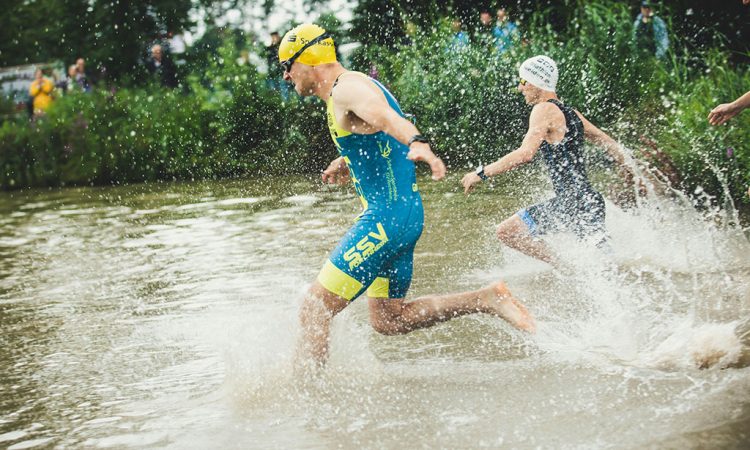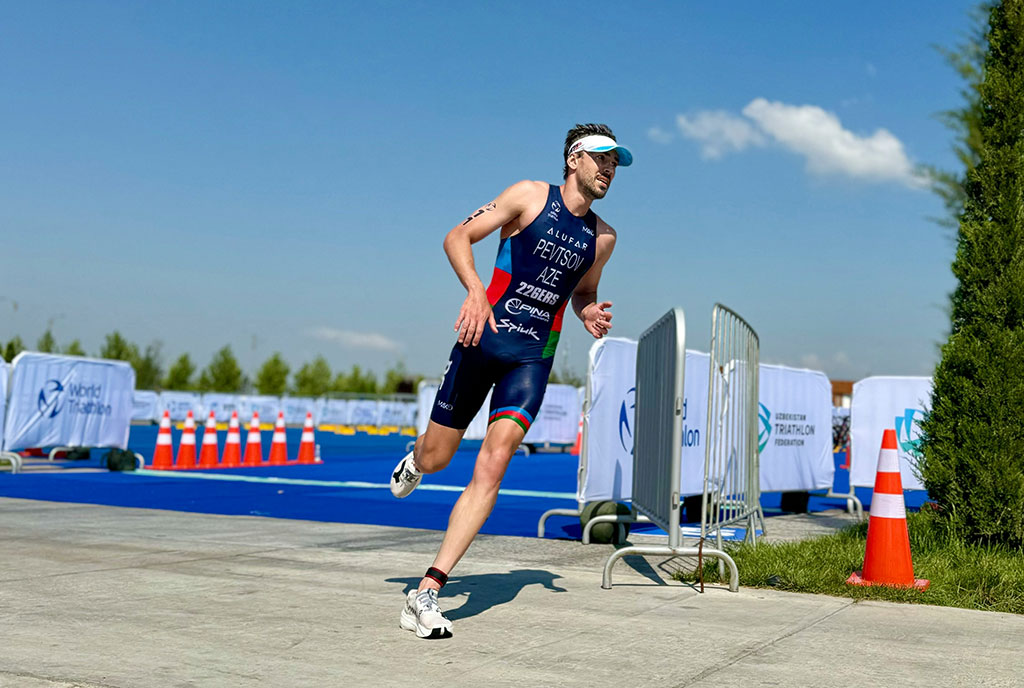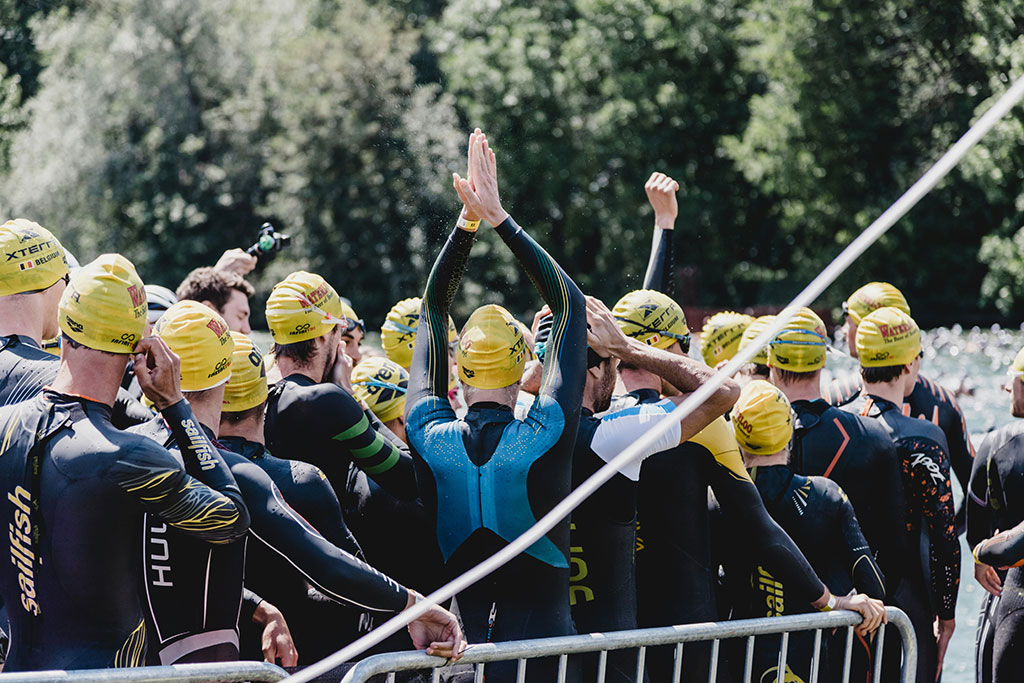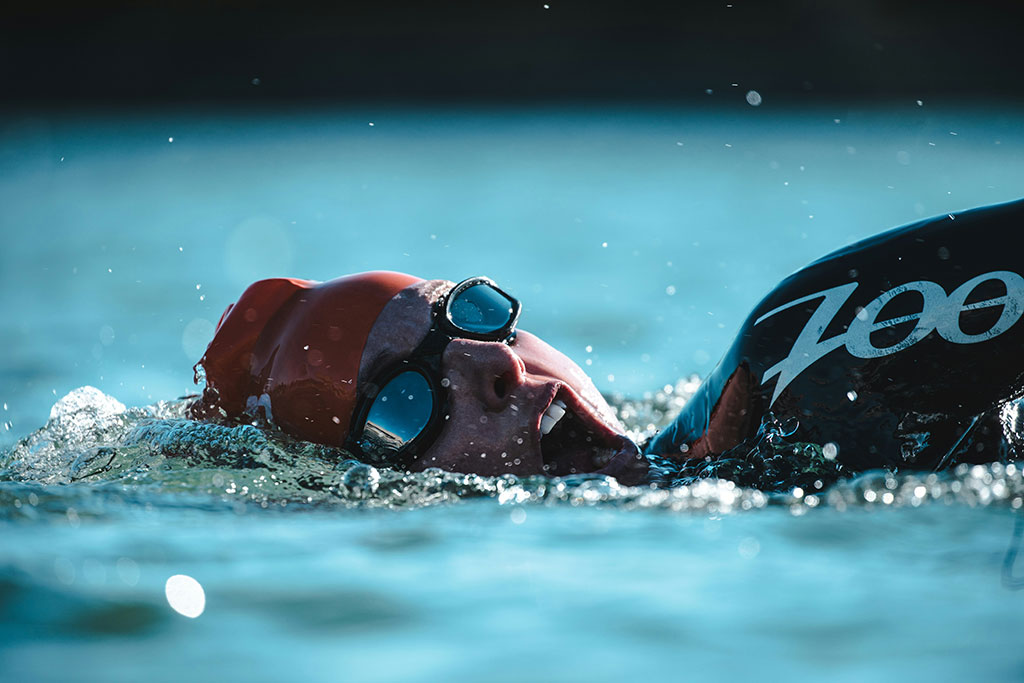
How Long Does It Take to Train for a Triathlon? A Practical Guide
Wondering how long does it take to train for a triathlon? The answer depends on a variety of different factors like the race distance and your current fitness level. It can range from a few months to over a year. In this guide we’ll outline ways to help you to effectively prepare for different types of triathlons.
Key Takeaways
- A well-structured training plan tailored to your race distance, fitness level, and personal goals is essential for a successful triathlon journey.
- Consistent training, including incorporating strength exercises and brick workouts, enhances endurance, injury prevention, and race day readiness.
- Proper nutrition, hydration, and rest are critical components of triathlon training that significantly impact performance on race day.
Understanding Triathlon Training Plans
A well-structured triathlon training plan is the cornerstone of any successful triathlon journey. It includes:
- Setting clear goals and understanding the steps needed to achieve them.
- Planning training sessions with specific days allocated for each discipline – swimming, biking, and running – to enhance consistency and integrate seamlessly with your personal schedule.
- Accommodating flexibility, allowing for necessary adjustments without compromising overall goals.
Consistency is key. The best training plans emphasize regular workouts, balancing shorter sessions with longer ones to build a solid endurance base. This approach ensures that you develop the stamina required to cover the triathlon distances effectively. A good training plan also recognises that recovery is equally important; adjusting training loads and incorporating recovery weeks are essential for long-term performance improvements and injury prevention.
Without proper planning, your workouts may lack the intention needed to build endurance, strength, and speed purposefully, potentially extending your training period significantly. Therefore, understanding triathlon training plans is crucial to ensure that each session contributes meaningfully to your overall progress. Whether you are training for your first sprint triathlon or aiming to compete in an Ironman, a structured and flexible plan is your roadmap to success.
Factors Influencing Training Duration
The time it takes to train for a triathlon varies widely and is influenced by several key factors. The most significant of these is the race distance. Longer events, such as a Half Ironman or a Full Ironman, naturally require more extensive preparation compared to shorter races like a sprint triathlon.
Additionally, an individual’s current fitness level plays a crucial role. Those with a strong athletic background and prior experience may find they need less time to take to train compared to beginners who are not as well trained.
Personal goals also impact training duration. Athletes aiming for competitive times or personal bests may need to invest more hours into their training compared to those whose primary goal is simply to finish the race.
It’s important to align your training with your available time and lifestyle to make the process sustainable and enjoyable. Understanding the relationship between race distance, your fitness level, and personal goals helps estimate a realistic and manageable timeline for triathlon preparation.
Sprint Triathlon Training Timeline
Training for a sprint triathlon typically involves about three months of consistent effort. During this period, athletes generally:
- Train five days a week
- Incorporate two sessions each of swimming, biking, and running
- Include rest days to prevent injury and allow the body to recover, especially when preparing for sprint triathlons. Additionally, training for a triathlon can help enhance overall performance.
This balanced approach ensures that all three disciplines receive adequate attention.
Weekly training hours for a sprint triathlon range from two hours and forty-five minutes to four hours. The initial weeks focus on gradually building endurance through shorter, consistent workouts. By the end of the training plan, participants are well-prepared to tackle the race day challenges, having built a solid foundation in each discipline, including how many hours of training they have completed.
Olympic Distance Triathlon Preparation
Preparing for an Olympic distance triathlon generally spans 16 weeks and involves a structured progression through various training phases. The training plan typically starts with a base phase, focusing on building aerobic capacity and endurance. This initial phase lasts about six weeks and prepares athletes for more intense workouts later.
As the weeks progress, the training session intensity increases, incorporating more racing-specific workouts to enhance performance and improve the overall race experience. For those aiming to perform well rather than just finish, the timeframe extends further, requiring additional focus to build speed and efficiency at a higher intensity during longer races.
This structured approach ensures athletes are well-equipped to tackle the 1.5 km swim, 40 km bike ride, and 10 km run of an Olympic triathlon race while wearing a tri suit, guided by a triathlon coach in their preparation for triathlons.
Half Ironman Training Commitment
Training for a Half Ironman requires a significant time commitment and a solid training foundation. Ideally, athletes should be comfortable swimming for an hour, biking for 20 miles, and running for five miles before starting a structured training plan. Beginners should allow at least 24 weeks to adapt to the triathlon disciplines and build the necessary endurance.
Recovery weeks are strategically placed every four weeks leading to allow athletes to absorb the training benefits and reduce fatigue. This approach helps manage the increased training load and prevents overtraining. Weekly training volumes typically average seven to eight hours per week, emphasizing the need for a structured and consistent training routine.
Athletes with a modest fitness background aiming to finish a Half Ironman feeling strong may need around eighteen months of structured training. This extended timeframe allows for gradual improvements in endurance, speed, and overall performance, ensuring athletes are well-prepared for the race day challenges.
Full Ironman Training Journey
Training for a Full Ironman is no mean feat. It is a monumental journey that requires dedication and time. For someone starting from scratch and aiming just to finish, a minimum of twelve months of training is recommended. This period allows for gradual improvements in all three disciplines of swimming, biking, and running to ensure a solid foundation is built.
Individuals with more ambitious goals, such as competing or qualifying for elite races, may need to commit to multiple years of progressive training. In some cases, it could take up to four years to go from no background to being competitive in an Ironman event. This long-term commitment highlights the importance of patience, consistency, and a well-structured training plan.
Efficient Training Strategies
For triathletes, consistent training is crucial for success. Regular workouts are more effective than sporadic, intensive sessions, as they help build aerobic endurance and improve overall performance. Efficient training plans typically include workouts that build aerobic base, develop fat-burning efficiency, and improve race-specific endurance.
A polarised training approach is effective for endurance athletes because:
- It focuses mostly on low intensity and some moderate intensity to avoid burnout.
- Incorporating varied intensity workouts can improve muscle efficiency.
- Improved muscle efficiency helps athletes perform at higher speeds with less energy expenditure.
This balanced approach ensures that athletes can train effectively without risking overtraining or injury.
Incorporating Strength and Resistance Training
Strength training is an essential component of triathlon training, crucial for injury prevention and enhancing endurance performance. Low-weight, high-repetition workouts are particularly effective in improving a triathlete’s endurance and power output. Full-body strength training programs enable triathletes to sustain power throughout their races, enhancing overall performance.
Incorporating strength and resistance training into your weekly routine can significantly improve your ability to generate muscular force during endurance sports events. This not only boosts performance but also reduces the risk of injury, ensuring you stay on track with your training plan.
Open Water Swimming Preparation
Open water swimming presents unique challenges that differ significantly from pool swimming. Varying water conditions, navigation, and the absence of lane markers require specific preparation. Practicing in open water swim helps triathletes acclimate to race-day conditions, improving their comfort and confidence.
Athletes should focus on techniques like sighting and drafting to enhance efficiency in open water swims. Familiarising yourself with the race course can also help reduce anxiety and enhance overall preparedness. This preparation ensures that athletes are well-equipped to handle the swim portion of their triathlon confidently.
Nutrition and Fueling for Training
Proper nutrition and fueling are critical components of triathlon training. Nutrition strategies should focus on balanced macronutrients and hydration, particularly after intense training sessions. The triathlete’s diet during training should emphasize a balance of protein, carbs, and healthy fats to sustain energy levels and minimise glycogen depletion during extended workouts.
Post-workout nutrition is crucial for recovery. Athletes should aim for 20-30 grams of protein within half an hour after training to aid muscle repair and recovery. Additionally, maintaining proper hydration is essential, with recommendations suggesting that athletes should consume fluid proportional to their body weight during activity.
Consistent sleep is fundamental for recovery, with an ideal duration of around 8.3 hours per night being beneficial for athletes. Prioritising restful sleep in the final days before the race can significantly impact performance. By focusing on a well-balanced diet, proper hydration, and adequate sleep, triathletes can optimize their training and recovery, ensuring they are race-ready.
Final Preparations Before Race Day
In the days leading up to the competition, it’s crucial to:
- Minimise physical exertion to maintain energy levels.
- Test different pre-workout meals, snacks, and sports nutrition products during training to determine the best foods and drinks that their bodies tolerate.
- Figure out race-day fueling during training to help avoid any surprises on race day with a solid nutrition plan.
Essential skills to practice before race day include mastering gear adaptation and smooth transitions between disciplines. Becoming proficient in quickly changing equipment and clothing such as removing your swim cap and wetsuit, putting on triathlon shorts and cycling shoes, and efficiently mounting your bike can save valuable time during the race. Practicing these transitions repeatedly helps reduce confusion and stress, allowing you to maintain momentum and focus throughout the event. Developing a seamless flow from one section to another is key to optimising your overall race performance and ensuring a confident race day experience.
Creating a checklist for race day tasks can alleviate stress and ensure nothing is overlooked. These final preparations ensure that athletes are well-prepared and confident as they approach the finish line at the start line.
Setting Realistic Race Goals
Setting realistic race goals is crucial for a successful triathlon experience. When determining race goals, it is important to evaluate your current fitness level and training accomplishments, rather than relying on past performances or ideal expectations. Utilising the SMART criteria can enhance goal-setting effectiveness for triathletes:
- Specific
- Measurable
- Achievable
- Relevant
- Time-bound
Dividing larger outcome goals into smaller, manageable process goals increases the likelihood of achieving overall race ambitions. Tracking incremental progress towards goals is important for motivation and allows athletes to celebrate small victories.
Building a supportive network, such as a triathlon coach, fellow triathletes or friends, can provide encouragement and accountability in achieving training goals.
Brick Workouts for Transition Practice
Brick workouts, typically involving a swim bike and run combination, are crucial for triathletes to acclimate their bodies to the transition between biking and running. These workouts can mitigate the fatigue and disorientation often felt when switching from cycling to running by simulating race conditions.
Athletes should incorporate a brick workout into their training at least once a week in the lead-up to a race, ideally starting 6-8 weeks prior. Weekly workouts generally consist of two swimming, two cycling, and two running sessions, with additional brick workouts included for transition practice.
This structured approach ensures that athletes are well-prepared for the demands of race day transitions.
Summary
Training for a triathlon, whether it’s a sprint or an Ironman, requires dedication, consistency, and a well-structured plan. By understanding the specific requirements of each race distance, incorporating efficient training strategies, and focusing on nutrition and recovery, athletes can effectively prepare for their triathlon goals. Remember, the journey is as important as the destination, and with the right preparation, you can achieve your triathlon dreams.
Frequently Asked Questions
How long does it take to train for a sprint triathlon?
Training for a sprint triathlon takes about three months of consistent effort, so commit to your plan and get started today! You’ll be amazed at what you can achieve with dedication.
What factors influence the training duration for a triathlon?
The training duration for a triathlon primarily depends on the race distance, your current fitness level, and your personal goals. Focus on these factors to tailor an effective training plan that works for you!
How much time should I commit to training for a Half Ironman?
To successfully prepare for a Half Ironman, aim to dedicate about seven to eight hours per week over at least 24 weeks. Consistency and commitment will get you across that finish line!
What are brick workouts, and why are they important?
Brick workouts are essential for triathletes as they help your body adjust to transitioning from biking to running, reducing fatigue and enhancing performance. Embrace these workouts to boost your endurance and confidence on race day!
How important is nutrition during triathlon training?
Nutrition is vital during triathlon training as it fuels your body, aids recovery, and maximizes your performance. Prioritising balanced meals and hydration will empower you to train effectively and achieve your goals.




